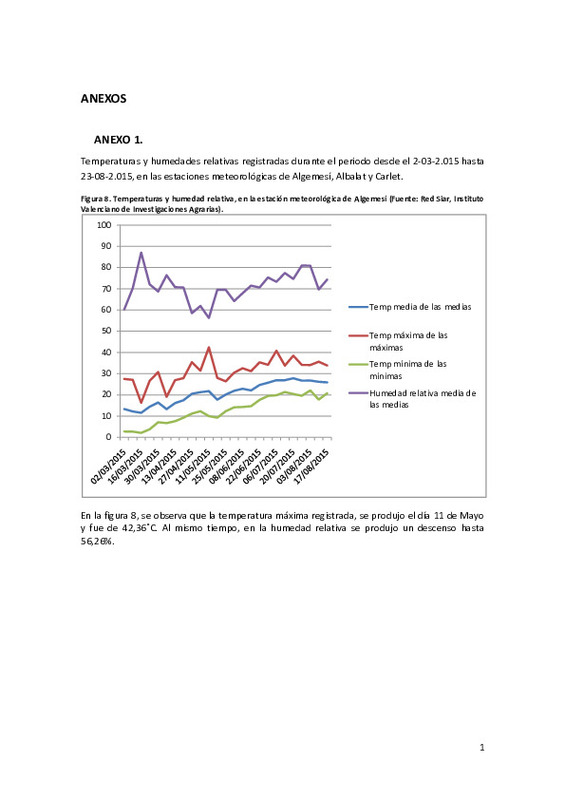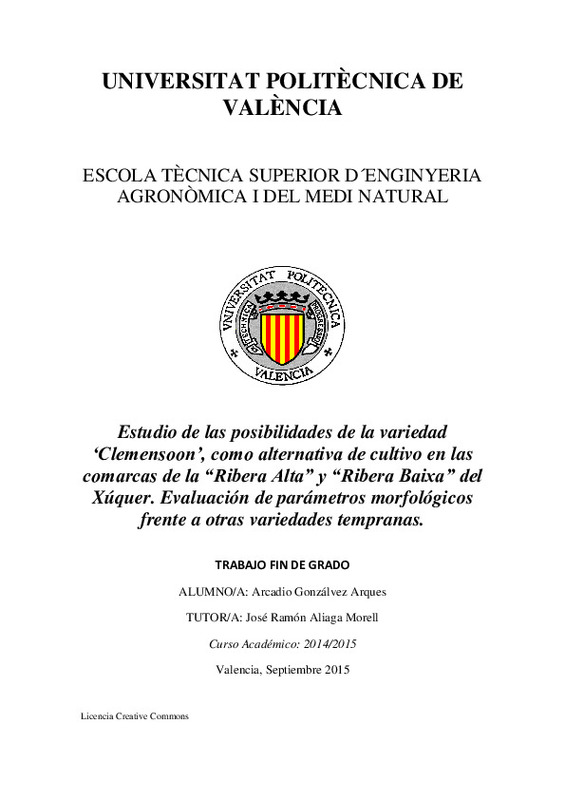

Estudio de las posibilidades de la variedad `Clemensoon', como alternativa de cultivo en las comarcas de la "Ribera Alta" y "Ribera Baixa" del Xúquer. Evaluación de parámetros morfológicos frente a otras variedades tempranas
RiuNet: Repositorio Institucional de la Universidad Politécnica de Valencia
JavaScript is disabled for your browser. Some features of this site may not work without it.
Buscar en RiuNet
Listar
Mi cuenta
Estadísticas
Ayuda RiuNet
Admin. UPV
Estudio de las posibilidades de la variedad `Clemensoon', como alternativa de cultivo en las comarcas de la "Ribera Alta" y "Ribera Baixa" del Xúquer. Evaluación de parámetros morfológicos frente a otras variedades tempranas
Mostrar el registro completo del ítem
Gonzálvez Arques, A. (2015). Estudio de las posibilidades de la variedad `Clemensoon', como alternativa de cultivo en las comarcas de la "Ribera Alta" y "Ribera Baixa" del Xúquer. Evaluación de parámetros morfológicos frente a otras variedades tempranas. http://hdl.handle.net/10251/55804.
Por favor, use este identificador para citar o enlazar este ítem: http://hdl.handle.net/10251/55804
Ficheros en el ítem
Metadatos del ítem
| Título: | Estudio de las posibilidades de la variedad `Clemensoon', como alternativa de cultivo en las comarcas de la "Ribera Alta" y "Ribera Baixa" del Xúquer. Evaluación de parámetros morfológicos frente a otras variedades tempranas | |||
| Autor: | Gonzálvez Arques, Arcadio | |||
| Director(es): | Aliaga Morell, José Ramón | |||
| Entidad UPV: |
|
|||
| Fecha acto/lectura: |
|
|||
| Resumen: |
[ES] Partiendo de la escasa rentabilidad de las variedades de cítricos en las comarcas de la “Ribera
Alta” y “Ribera Baixa” del Xúquer, se pretende encontrar una variedad que ayude a lograr una
mejora en las calidades y ...[+]
[EN] Starting from the low profitability of citrus varieties in the regions of the "Ribera Alta" and
"Ribera Baixa" the Xúquer, find a variety intended to help achieve an improvement in the
quality and benefits the ...[+]
|
|||
| Palabras clave: |
|
|||
| Derechos de uso: | Reserva de todos los derechos | |||
| Editorial: |
|
|||
| Titulación: |
|
|||
| Tipo: |
|
recommendations
Este ítem aparece en la(s) siguiente(s) colección(ones)
-
ETSIAMN - Trabajos académicos [3541]
Escuela Técnica Superior de Ingeniería Agronómica y del Medio Natural






